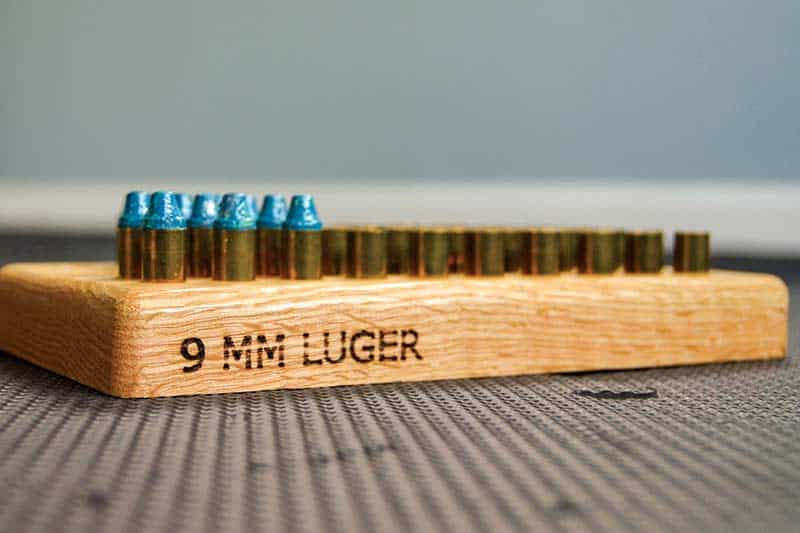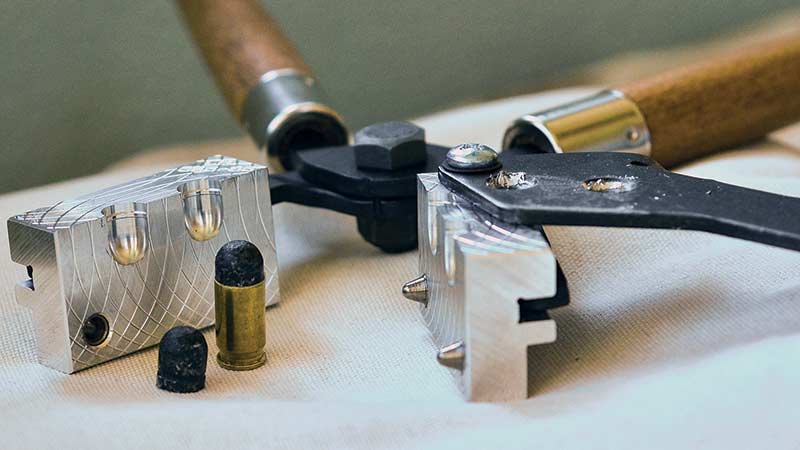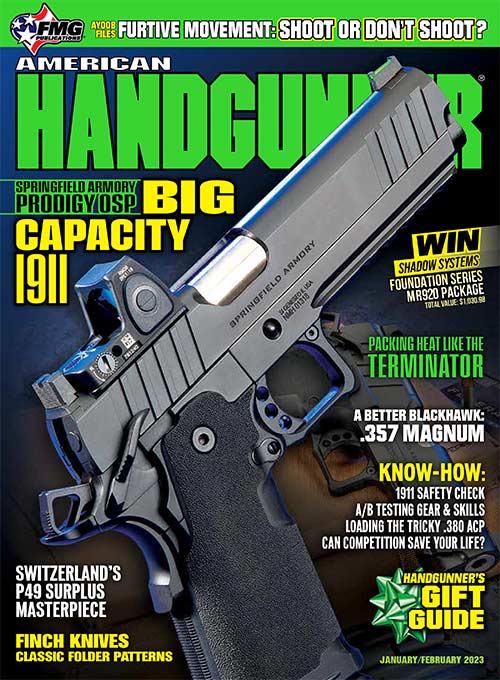Handloader: Loading .380:
Finicky But Worth It
If you had asked me 10 years ago if the .380 was a suitable cartridge for personal defense, I might have replied, “Marginal, at best.” But I have to admit the .380 just gets better and better.
To be a great caliber, there has to be a source of reliable practice rounds. However, there is little load data out there and factory rounds are expensive. As a result, I’ve been reloading .380 for decades. It’s not a cartridge for beginners, but the rewards are astronomical.
Bearing Surface
Case mouth thickness varies greatly among brass brands and the .380 has only a short area to grab a bullet and optimize neck tension.
Solution: Use a bullet with a longer cylinder bearing surface. The best .380 bullets I’ve found have a “more tangent” ogive and a longer cylinder. If you want a good mental picture, consider Everglades Ammo .380 Auto 100-grain plated bullets.
For lead, I use Lee molds TL-356-95-RF, 90316 and 365-95-1R.
The TL-356-95-RF will give you light, accurate loads and moderate slide velocities from the .380’s blowback operation.
The 90316 mold is no longer in production, replaced by the 358-105-SWC. This mold was designed for light .38 Special loads and generally drops at 0.358″. I size them to 0.356″.
The 365-95-1R was designed for Makarovs. It has a long cylinder surface and short nose. Bullets need to be forced into a 0.356″ sizing die. This turned out to be the most accurate and reliable of all my .380 loads.
Because the 365-95-1R is “fat” to its ogive, it occasionally wants to stick in the seating die. Like all .380 loads, your crimp should just be enough to close the rim and no more. There are taper crimp dies available, but none come with a caution against over crimping, which they should. The difference between the case diameter and the crimp is measured in thousandths, not hundredths.
Slug your barrels. Some guns, like the Beretta 1934, run 0.357″ bullets better. Mine like 0.356″, but it is normal to run 0.001″ over the groove diameter.
Single Stage!
The loading block is your friend. The .380 is not the best choice for a progressive loader because it requires a little more “feel” when neck expanding and seating.
I use a Hornady Lock-n-Load Powder Measure for production reloading. Your most important tool is a loading block. A “universal” block won’t cut it because the tall sides won’t allow the lips of a powder measure to seal on the case mouth. One of the best products out there is a Durling Wood Works loading block for 9mm.
Make Weight
The .380 functions best with bullets ranging from 80 to 110 grains at moderate velocities. Longer bullets may engage the rifling beyond the chamber; others drag their noses in the magazine. Light bullets often don’t offer enough bearing surface for proper neck tension.
Roughly half of all .380s are straight blowback operation that can get battered with the use of hot loads and heavier bullets.
My pick for powders is RamShot True Blue, a relatively dense ball powder that meters well. True Blue is slower burning than many would use in a .380, but it fills the cases and gets the velocities with a slightly slower spike in pressure. HP38 is a bit quicker and it is what I grab for small case volume loads.
Results
With the 365-95-1R sized to 0.356″, I loaded 3.4 grains of RamShot True Blue at an OAL of 0.944″. It had a shockingly low standard deviation, running 698–700 fps. Even in my NAA Guardian’s 2.5″ barrel, it shot little groups, fed and functioned without problems. This is a good training load.
With the 90316 105-grain SWC mold, I ran 2.3 grains of HP38 with an OAL of 0.950″. Most reloaders know HP38 has a “sweet spot” where it burns with almost no residue and shoots small groups. Performance drops off quickly as it approaches 2.7 grains, so see what works in your .380.
Loading the TL-356-95-RF, I ran PC bullets with 3.4 grains of RamShot True Blue at 3.4 grains and OAL of 0.939″. The velocity was slightly lower than the 365-95-1R and felt recoil was a little softer.
Unique works well in the .380, as long as the loads are measured by weight, not volume. Volume measures don’t do well with Unique loading less than 4 grains. For the 90316 mold, 2.9 grains of Unique puts it right in the middle of the scale.
The .380 is more fun to shoot than most of my other guns. The newer defensive loads make it a viable option for your dinner jacket carry. Sort your brass and load your practice rounds carefully.
For more info: DurlingWoodWorks.com, EvergladesAmmo.com







